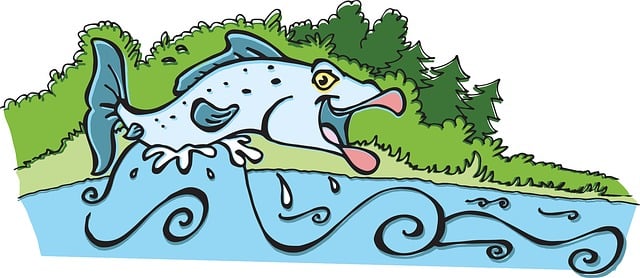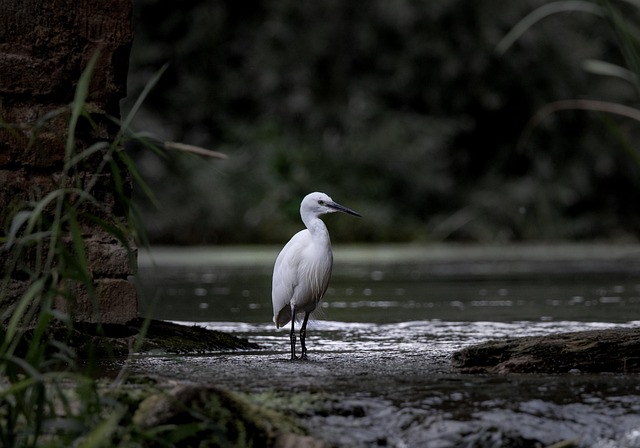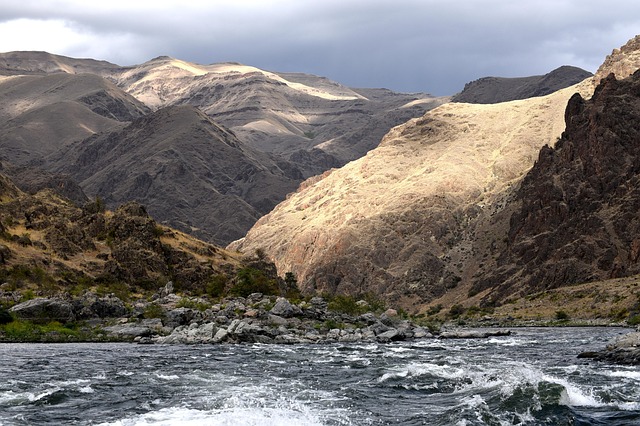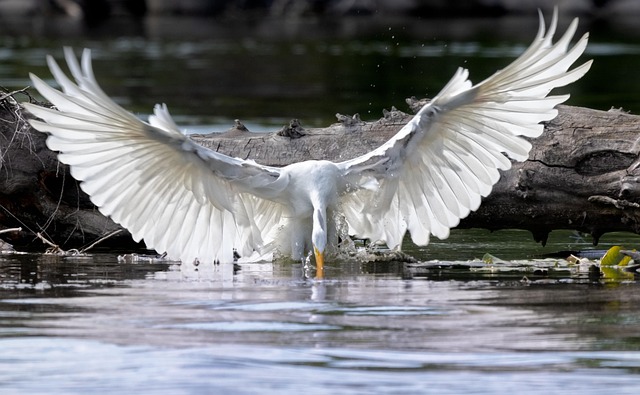The McKenzie River in Oregon is a biodiversity hotspot renowned for its excellent fishing, attracting anglers globally. Indigenous communities pioneered sustainable fishing practices, but modern gear has raised overfishing concerns. Proactive conservation efforts focus on preserving the river's ecological health through size limits, catch-and-release policies, water quality protection, and riparian zone restoration. Collaborative strategies aim to maintain iconic fishing techniques like fly-fishing while ensuring the river's future as a thriving ecological gem for all.
The pristine McKenzie River, a vital ecosystem in Oregon, has long been a haven for anglers and nature enthusiasts. This article explores the intricate balance of conservation efforts surrounding the river’s unique fish populations and the evolution of sustainable fishing practices. From understanding the ecological significance to examining historical fishing techniques, we delve into strategies to protect the river’s integrity while ensuring the sustainability of its iconic McKenzie River fishing techniques for future generations.
- Understanding the McKenzie River Ecosystem and Its Significance
- Historical Perspective: The Evolution of Fishing Techniques on the McKenzie
- Current Conservation Efforts: Protecting the River's Integrity
- Impact of Human Activities on Fish Populations in the McKenzie
- Sustainable Fishing Practices: A Collaborative Approach for Conserve Success
Understanding the McKenzie River Ecosystem and Its Significance
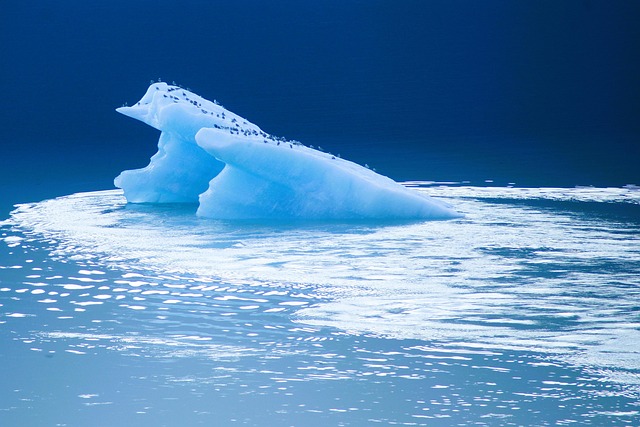
The McKenzie River, winding through Oregon’s scenic landscapes, is more than just a beautiful waterway; it’s a vibrant ecosystem teeming with life. This river supports a diverse range of flora and fauna, making it a hotspot for wildlife enthusiasts and ecologists alike. Beyond its natural value, the McKenzie River holds cultural significance for local indigenous communities who have relied on its resources for centuries. Understanding this intricate web of life is crucial to implementing effective conservation efforts.
The river’s unique characteristics, including its pristine waters and varied habitats, make it a haven for various fish species, attracting anglers from around the world. McKenzie River fishing techniques, ranging from fly fishing to spin casting, showcase the river’s appeal. However, these activities also highlight the need for balanced conservation strategies to ensure the long-term health of the ecosystem, preserving both its natural beauty and the recreational opportunities it offers.
Historical Perspective: The Evolution of Fishing Techniques on the McKenzie
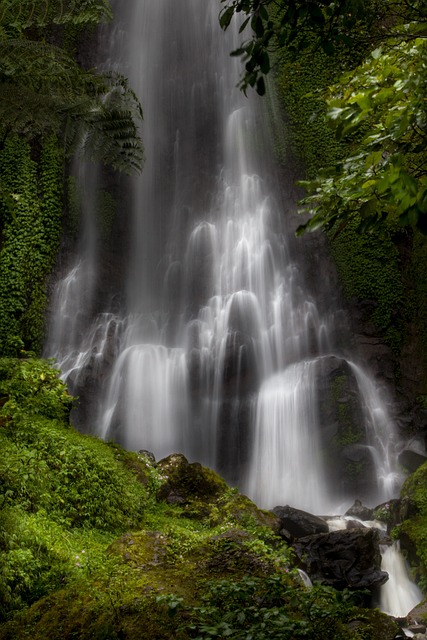
The Mackenzie River, a majestic waterway stretching across vast landscapes, has long been a hub for fishing enthusiasts and a vital ecosystem for numerous species. Historically, the region’s indigenous communities developed intricate knowledge of the river’s ecology, adapting their fishing techniques to the ever-changing environment. Traditional methods involved hand-made nets, traps, and spears, allowing them to sustainably harvest fish for sustenance and trade.
Over time, as external influences impacted the area, so too did the evolution of McKenzie River fishing techniques. The introduction of modern gear, such as fishing rods and reels, brought about a shift in practices. While these advancements facilitated easier access to fish, it also led to overfishing concerns. Conservation efforts have since focused on promoting sustainable practices, including implementing size limits and catch-and-release policies, ensuring the river’s rich biodiversity remains intact for future generations of anglers.
Current Conservation Efforts: Protecting the River's Integrity

The McKenzie River, renowned for its vibrant ecosystem and exceptional fishing opportunities, faces various challenges that threaten its integrity. In response, numerous conservation efforts have been initiated to safeguard this precious natural resource. One key focus is the preservation of water quality, as pollution and sediment runoff can severely impact aquatic life and disrupt the delicate balance of the river’s habitat.
Conservationists are employing various strategies, such as implementing stricter regulations on nearby industries and agricultural practices, to minimize pollution. Additionally, restoration projects aimed at rehabilitating riparian zones and removing invasive species help restore the river’s natural functions and enhance its beauty. These initiatives not only ensure the sustainability of popular fishing techniques like fly-fishing and spin casting but also preserve the McKenzie River as a thriving ecosystem for future generations to enjoy.
Impact of Human Activities on Fish Populations in the McKenzie

The vibrant ecosystem of the McKenzie River, known for its stunning beauty and rich biodiversity, has faced significant challenges due to human activities. One critical aspect that has been greatly impacted is the river’s fish populations. Over the years, various fishing techniques employed by humans have altered the natural balance of this delicate environment. The introduction of modern fishing methods, such as commercial netting and targeted sport fishing, has led to a decline in certain species’ numbers. These activities disrupt the ecological web, especially as some techniques catch not only the intended target but also non-target fish and other aquatic creatures.
McKenzie River’s once thriving fish communities are now at risk due to this human interference. The impact is felt across various levels of the food chain, affecting both the river’s overall health and the livelihoods of species that depend on it for sustenance. As a result, conservation efforts have become paramount to restoring and preserving the river’s ecological integrity and ensuring the sustainability of its fish populations for future generations.
Sustainable Fishing Practices: A Collaborative Approach for Conserve Success

The success of conservation efforts on the McKenzie River heavily relies on collaborative initiatives, especially in the realm of sustainable fishing practices. The river, known for its vibrant ecosystem, faces challenges from various human activities, including overfishing. By adopting and promoting responsible fishing techniques, local communities, environmental organizations, and government bodies can work together to protect the delicate balance of the river’s biodiversity. This includes implementing regulations on catch limits, size restrictions, and designated no-fishing zones, which help prevent the depletion of key species.
One innovative approach involves educating anglers about McKenzie River fishing techniques that minimize impact. This might include teaching the use of circular or sinkerless hooks, which reduce entanglement in aquatic plants and wildlife. Additionally, promoting catch-and-release methods ensures that fish populations can continue to thrive, sustaining the river’s ecological health for future generations to enjoy. These collaborative strategies not only support conservation but also foster a deeper connection between humans and nature, ensuring the McKenzie River remains a testament to sustainable coexistence.







